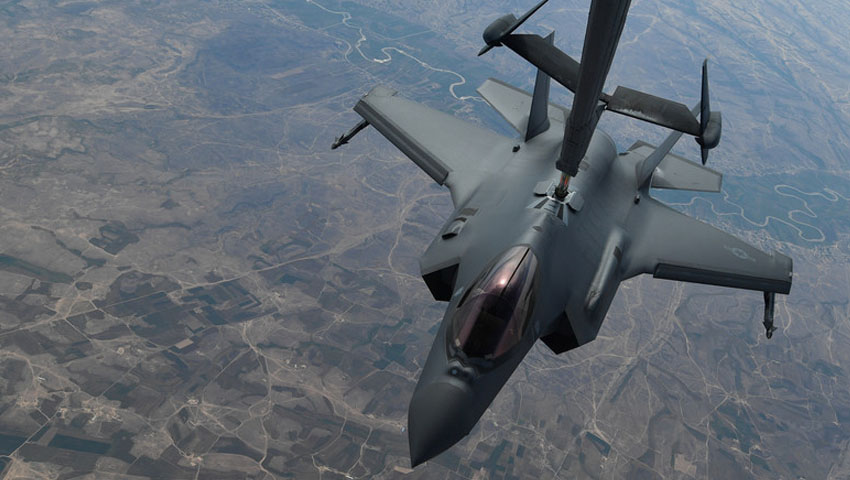The US Air Force’s 388th Fighter Wing has shifted focus towards enhancing the operational capability and mission readiness of the F-35 Joint Strike Fighter to provide a standard for allied F-35 operations.
To continue reading the rest of this article, please log in.
Create free account to get unlimited news articles and more!
As the Air Force continues to sharpen its competitive edge to become a more lethal and ready force, the first combat-coded F-35A Lightning II wing has been a key contributor to the force’s overall readiness.
Over the summer, all three squadrons — nearly 70 F-35A aircraft — were operating away from home station. They conducted operations in nine different countries on three separate continents, supporting multiple combatant commanders.
One squadron supported a European Theater Support Package, another squadron conducted off-station operations at Mountain Home AFB, Idaho, while Hill’s runway was under construction, and one squadron is currently conducting the first F-35A combat deployment.
Colonel Steven Behmer, 388th Fighter Wing Commander, said, "We’re focused on maintaining and improving every aspect of readiness – training, manning, and developing our people and tactics to meet current threats. Our maintainers are doing a great job providing the sorties we need to do just that."
Those successes can be attributed to several factors, from the accelerating experience levels of the maintainers, to rebounds in the supply process.
And not everything has been a recent fix. The numbers are catching up to past process improvements.
Chief Master Sergeant Trey Munn, 388th MXG chief enlisted manager, explained, "A lot of the time people’s perceptions and expectations of the program are influenced by stale data, old, inaccurate information. A really good example is the [Autonomic Logistics Information System]. There are definitely applications within ALIS that still need to be addressed, but the prognostic health management system and joint technical data are great examples of where ALIS, on the whole, has improved and we’ve improved."
Colonel Michael Miles, 388th Maintenance Group Commander, said the jet’s prognostics health management system can detect problems before they fail and allow maintainers to prioritise workload.
Making prudent maintenance decisions in co-ordination with the operations group’s flying schedule is a key process enabled by these systems.
The newest batch of jets from Lockheed Martin’s Fort Worth, Texas, production facility are also reflected in the improvements.
"We’re not seeing the same problem parts and issues that we did in the past. Problems sent in from the field are being addressed and solutions are woven into the production line. I like the trajectory we’re currently on. There have been some valleys, but our overall experience shows we’re on a readiness incline," COL Miles explained.
Last fall, former defense secretary James Mattis directed Air Force and Navy fighter squadrons to improve materiel readiness by achieving a mission capable rate of 80 per cent – something many believed to be a lofty goal given the operations tempo, manning and resource constraints faced by all of the services.
Twelve months later, materiel readiness at the 388th FW, to include one squadron currently deployed, has seen remarkable improvements. This was highlighted when 388 FW units hit a single-day high in September with two units above 90 per cent mission capable and the third unit above 80 per cent.
This is a huge testament to the level of effort the Airmen maintaining and sustaining the F-35 have put in over this year.
Mission capable rates are just one component assessed at the unit level to determine readiness. In a recent interview, Air Force Chief of Staff General David Goldfein described five aspects of overall readiness, which include training Airmen, sustainable budgets and funding, mission preparation, reliable logistics supply chain of available parts, and flying hours so pilots have more time in the air.
Parts and systems are not the only thing required to maintain aircraft. So are people.
"Experience levels are often overlooked in the maintenance equation. We had a really robust talent pool when we stood up our first operational aircraft maintenance unit in 2015. Over time, that experience level became diluted as we stood up two other AMUs, lost people to PCS and retirement, and we had a lot of brand new F-35A maintainers. It takes time to build that experience level back up," COL Miles added.
The Lockheed Martin F-35 Joint Strike Fighter is billed as a catalyst for the fifth-generation revolution, changing the face and capability of the Royal Australian Air Force and the wider Australian Defence Force.
For the RAAF, the F-35A's combination of full-spectrum, low-observable stealth coatings and materials, advanced radar-dispersing shaping, network-centric sensor and communications suites – combined with a lethal strike capability – means the aircraft will be the ultimate force-multiplying, air-combat platform.
The F-35A – the variant chosen by the RAAF – will have a projected life of 30 years in service.
Over the coming years, Australia will purchase 72 of the advanced fifth-generation fighter aircraft as part of the $17 billion AIR 6000 Phase 2A/B program – which is aimed at replacing the ageing F/A-18A/B Classic Hornets that have been in service with the RAAF since 1985.
Stephen Kuper
Steve has an extensive career across government, defence industry and advocacy, having previously worked for cabinet ministers at both Federal and State levels.

 Login
Login








